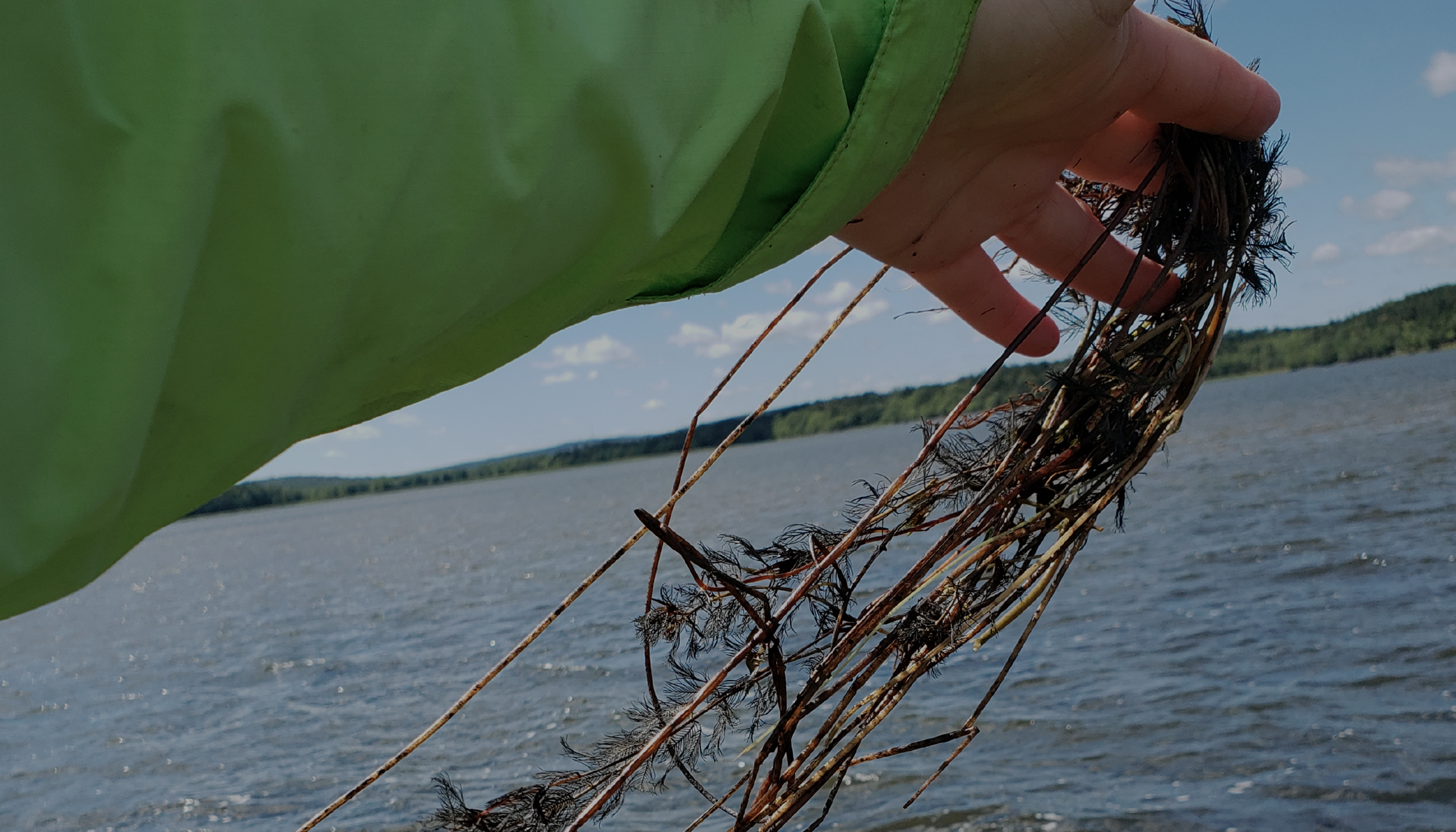
Invasive Species | Aquatic Plants
Eurasian watermilfoil
Eurasian watermilfoil
(Myriophyllum spicatum)
French common name: Myriophille en épi
Description:
Eurasian watermilfoil (Myriophyllum spicatum) is an invasive aquatic plant species native to Europe, Asia, and Northern Africa that was introduced to North America in the 19th century via ballast water or the aquarium trade. It has now become widely distributed across the continent, including in New Brunswick throughout the Wolastoq River/ St. John River basin.
Problem:
Eurasian watermilfoil has severe impacts on aquatic ecosystems when it is introduced to a new area, including rapidly establishing and forming dense mats of floating vegetation that shade out native aquatic plants and reduce oxygen in the water, impacting fish and other species. Large mats of Eurasian watermilfoil can also limit recreation, boating, and fishing opportunities in local waterbodies.
Species identification:
Eurasian watermilfoil is a perennial aquatic plant that grows submerged in lakes, rivers, and other waterbodies. It has a dense brushy appearance resembling a bottle brush, with feather-like leaf structures with 12 or more segments arranged in whorls (circles) around the stem.
How it’s spread:
This species spreads easily through small plant fragments and disturbance by propellers, paddles, and other equipment, so it is essential that boaters and recreation users Clean, Drain, and Dry (hyperlink to program page) all boats and equipment before moving to a new waterbody. Be sure to clean off any plant fragments and parts that could be attached to boats and trailer equipment after leaving the water.

